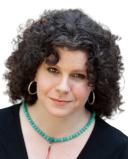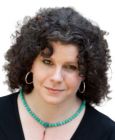Trauma
Individual vs. Collective Trauma
Lessons from the California fires.
Posted November 2, 2019 Reviewed by Devon Frye
I’m sitting in my backyard after spending most of the morning feverishly following Facebook, Twitter, news channels, and emergency scanners. I’m texting friends, emailing family out of the country, and listening for the sound of police and fire sirens. A town away, my friends' lives are currently in danger, and I'm helpless. My heart is racing. My mouth is dry, and my hands are trembling.
Welcome to the fire season in Southern California.
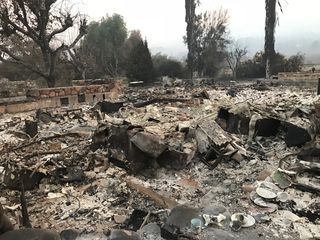
Two years ago, my studio in Southern California burned down in the Thomas Fire. Evacuated without notice, my landlords and I fled to the downtown emergency shelter and spent the next three days in a Red Cross converted gymnasium. The center lacked a TV or official updates of the fire’s progress.
What we did gather was that the flames, in a most singular event, enclosed almost the entire town (later called "The Crab"). Firefighters continually and heroically defended the town. This did not save our residence, but the town remained unscathed.
“Remained unscathed,” however, is a misleading description. Residents who were within the town’s border, those who fled through blazing hills on both sides of the road, people who found refuge in hotels and friends' houses away from the fire’s path (not knowing if their houses would be left standing), townspeople who attempted to gather their horses and animals into trailers while unable to see through the fierce smoke, the Red Cross staff and business owners who stayed and fed the community, the firefighters who often did not sleep for two days straight, flames and smoke enveloping them, and the thousands of distant family and friends who watched the news helplessly—all of us were deeply affected.
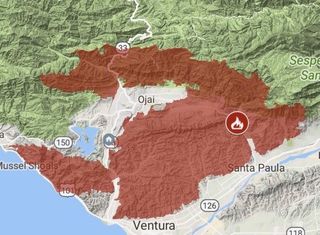
This is still happening, in areas all over California, right now. And while fire has been a constant occurrence in California, never has it escalated to this proportion and frequency.
After the Thomas Fire, we spoke of the trauma to those who lost homes. And yes, it was traumatizing to flee with my dog, a bag, and a computer and then return to nothing. As someone who has experienced multiple traumas and having a diagnosis of complex post-traumatic stress disorder (CPTSD), that fire is certainly at the top of my list.
However, this was my first and only experience of trauma within a community. And as I tried to regain the pieces of my life and mental health, I became aware of significant differences between my personal trauma and the one which occurred during and after the fire: Previously, I’d always been alone with my distress or referred to a therapist. In the case of a communal disaster, trauma cannot be bracketed and reserved for specific people. The community, within and outside the wildfire’s permitters, were uniformly traumatized and experienced to varying degrees the symptoms of post-traumatic stress disorder (PTSD). We all needed help. And with that, my awareness of the distinctions between individual and collective trauma expanded and deepened.

The American Psychiatric Association describes post-traumatic stress disorder as a response to being exposed to an event that threatens oneself or others with death or serious injury. It involves helplessness, fear, and horror. The understanding of trauma, however, is slowly expanding.
It's now recognized that a person or population can experience compounded lifelong threats, resulting in complex post-traumatic stress disorder. A lifetime of trauma can come in many forms: from living in abusive family systems to existing in a culture where being black, homosexual, and female is life-threatening simply by virtue of who one is. The PTSD/CPTSD I’m now writing about is from the vantage point of a town in the midst of communal, ongoing, and compounded trauma from natural disasters.
As I currently sit with my multiple devices, chain-smoking in between deep breathing exercises (do these cancel each other out?), I receive texts and read Facebook posts from local friends and compatriots who went through our fire nearly two years ago. Current fires occurring nearby our town and in other parts of the state have put us all on high alert. Many of us have evacuation bags packed and ready by the door.
Ativan which sat at the back of the medicine cabinet is now on the kitchen table. Electricity shuts off and on, notices of high-velocity winds put us into the red zone of fire hazard. Friends coordinate “fire watch” schedules, and many cannot sleep at night. Panic compels people to call in dust-clouds as possible flare-ups. I'm trying to stay calm.

A friend I’m relying on for emotional support listened to my panic yesterday and reminded me that right now I am safe. This is tremendously important. I am safe, and what I'm feeling makes sense. PTSD does not recognize time, so I become trapped in an emotional loop and need others to pull me out.
But back to this issue of community-specific trauma versus individual trauma. Growing up, I lived in a home where I was not safe and a community that did not see or know about my circumstances or, even worse, ignored it. My first coping strategy was alcohol and substance use, then self-harm, then running away from home.
I continually made choices and put myself in the same circumstances that first traumatized me. As an adult, I rarely felt safe, and often I wasn't. I didn't know how to connect with others, because I'd never learned how. I still existed as a person trapped and alone, even when I wasn't. I never considered that my personal history, rooted in negligence, needed more than medication, therapy, and self-help. Because no one reflected back the causes of my wounding, I had no reference point—neither for the events nor for how they could be healed.
After the fire, however, all this changed. I was no longer a psychiatric patient, nor could I deny the impact of my situation. Everyone suffered the same symptoms and causes. We are a small community nestled in a valley in which everyone's life was threatened. And with this understanding, I’m now seeing clearly the difference between how my previous traumas were ineffectively addressed and how the gifts of communal recognition and witnessing can heal both present and past devastations.

These distinctions resulting from my "fire experience" have shown me the following:
- Individual trauma is encapsulated and interiorized. Much of what causes it is hidden by those who have perpetrated it or by those who prefer to keep it within the walls of the family or group.
- Communal trauma cannot be denied or ignored. People band together and support each other. Mutual recognition and shared experience are its hallmarks. The #MeToo and #BlackLivesMatter campaigns were not merely about raising awareness—they brought victims together nationally through sharing personal experience and identifying the incidents previously hidden.
- With individual trauma, isolation and community denial result in a lack of enduring support by trusted intimates and helpers. One is placed in talk therapy with clinicians often lacking training in trauma. It is common practice to ascribe a diagnosis and prescribed medication. Demarcating trauma solely within the individual places the onus of healing on the person who has suffered. While professional treatment is important (I thank God every day for my long-term therapist and the medication I’m on), the fire revealed that it was not nearly enough. Healing is most powerful when those nearest and dearest can hold and recognize our distress and be present to our needs as human beings, not clients or patients.
- Communal trauma, on the other hand, creates immediate community support. Suffering is rapidly acknowledged and local resources activated. Within two days of the fire, for example, a handful of locals established a make-shift crisis and support center in the back parking lot of a convenience store. People donated clothing, offered housing, brought cooked food, and coordinated support systems that no local, county, or state organization then provided. The Facebook community went into overdrive with emotional support groups, businesses giving free acupuncture and massage. Imagine this: strangers pouring out their hearts and strangers opening up their own.

It is now almost two years later. In the course of this writing, I’ve received a county emergency text and phone notification to prepare for the worst, as the Santa Ana winds are going to escalate to up to 60 miles an hour in the upcoming days. But this is not a case where every time I walk down the street and feel a menacing presence, I must deal with it alone. The ”new normal” of the fires has created a new community.
My housemates and I check in with each other hourly to see how we’re doing. The Facebook pages and groups rally with each impending threat. I sometimes exchange quick texts with my therapist on a daily basis (I joke with him that I am surely the most high-maintenance client he’s ever had), but therapy is not enough; for the remaining time, I am left to handle this with what other resources are at hand.
This contrast between individual and communal trauma leads me to wonder, with some grief, what would have happened if, in the earlier course of my life, my traumas had been approached with the same outpouring of love, support, recognition.
I no longer believe that trauma is an individual experience which should rely solely on professional support. With the fires again surrounding us, it continues to be up to our community to share and affirm our enduring trauma and tend to each other. The research by clinicians liked Bessel van der Kolk is now showing that trauma healing involves social engagement, body-focused practices, the establishment of safe spaces, and shared lived experience. Talk therapy may lead to awareness, but healing encompasses every aspect of a person’s body and life.
I could not have survived these past two years without the hundreds of strangers who fed, sheltered, clothed, held, listened to, and loved me. I never identified myself as a mentally ill person through this trauma. There was no need to.
An entire town carried me and countless others through the flames and into a sense of safety. Now I live in a house with stability, love, and mutual support. I can walk to the local coffee shop and engage in conversations with others who are feeling exactly what I am. I am not alone with my trauma, even as I’m re-experiencing it today.
In this community, everyone is a witness. I so wish that every hurt, terrified person in this world could have this—for there is no “wellness” without “we.”
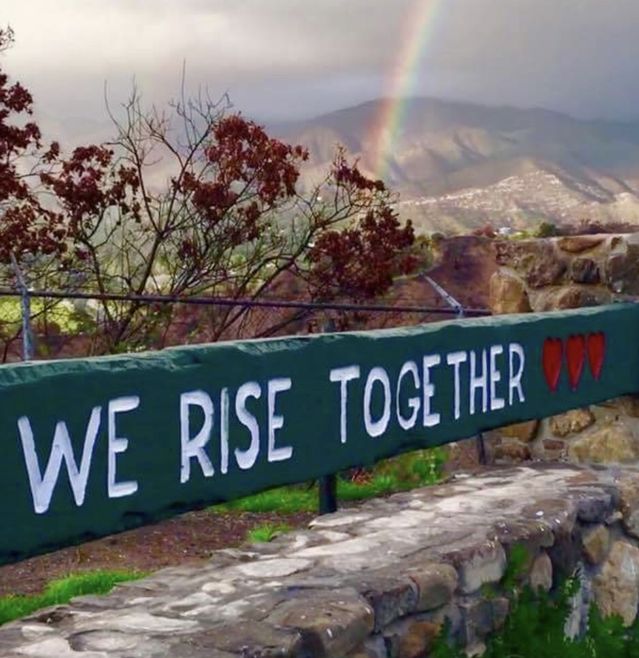
References
American Psychiatric Association. Diagnostic and statistical manual of mental disorders. 5th ed. Arlington, VA: American Psychiatric Association; 2013.
